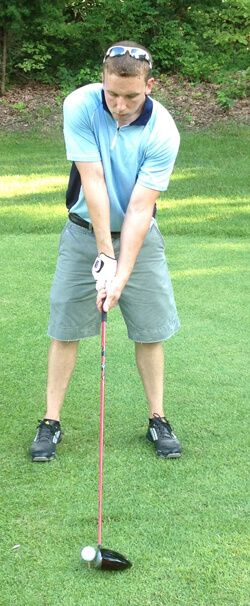Pediatric NeuroNews
October 22, 2013

To be on the safe side, his workout partner—the family chiropractor—suggested that McDonough get an MRI. Results showed that, rather than a simple strain, the source of McDonough’s symptoms was a large mass covering nearly his entire cervical spine. A biopsy soon established his diagnosis as a grade 2 intramedullary spinal cord ependymoma. Because these tumors arise from cells inside the spinal cord, the tumors themselves grow inside this exceedingly delicate structure. Consequently, the cord itself needs to be cut open for tumor resection, making the risk of neurological deficits from resection exceedingly high.
“Every surgeon we saw told me I needed surgery to remove it,” says McDonough, “but that if they did surgery, I’d be paralyzed from the chest down, and I would live on a ventilator for the rest of my life.” Putting off this frightening fate, McDonough received radiation and went on a steroid for months, hoping to shrink the tumor, or at least stop or slow its growth. But these treatments didn’t stop the lesion’s inexorable spread, making surgery inevitable.
Hoping that her son’s future could be less grim, McDonough’s mother, Mary, spent hours in medical libraries researching Steven’s condition and searching for a surgeon who might be able to help him without dire consequences. Eventually, she found Johns Hopkins pediatric neurosurgeon George Jallo.
McDonough and his family expected Jallo to give them the same prognosis they’d received from other neurosurgeons. But Jallo, who’s performed dozens of similar resections, had different news: He felt that with his experience and the neurophysiology team monitoring Steven’s motor and sensory pathways, not only could he remove the tumor, but McDonough would walk away from the hospital in two weeks.
Although the operation would require cutting through healthy spinal cord tissue, Jallo was confident that he’d be able to remove the tumor without causing any deficits. As an extra safety measure, Jallo would be working with Johns Hopkins’ intraoperative neurophysiological monitoring team, keeping an eye on McDonough’s nerve function throughout the procedure.
When Jallo opened McDonough’s spinal cord in April 2008, he found that the structure was nearly triple its normal size because of the tumor within. Parting the cord like the pages of a book, he teased out the ependymoma without damaging healthy tissue. Readings from McDonough’s neurophysiological monitoring remained normal throughout the procedure, assuring Jallo that his patient’s neurologic function remained unscathed.
McDonough remembers waking up after the four-hour procedure and feeling an immense sense of relief. He could wiggle his feet, move his hands—and knew he was okay.
After a spinal fusion in 2009 that Jallo and Johns Hopkins orthopedic surgeon Michael Ain performed to repair damage McDonough suffered from radiation, McDonough set about getting back into shape. Today, with the exception of playing heavy contact sports such as football and hockey, he’s back doing everything he was able to do before his tumor was diagnosed—a fact that’s still a shock, he says, after being told he’d never walk again.
“Even if I have to wake up at 6 or earlier every day, I still do it,” he says. “All these people were rooting for me, and I owe it to them to be the best that I can be.”
To view a video about Steven’s journey, visit bit.ly/Steven-Hopkins.
FOR INFORMATION: 410-955-7337
